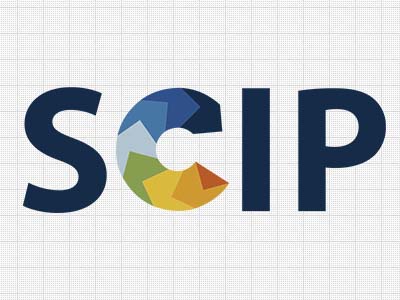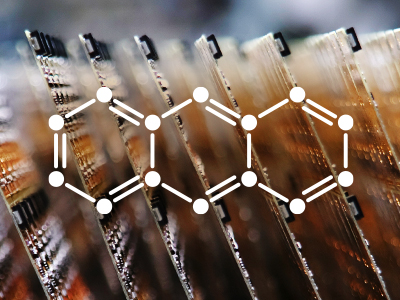What Is the SCIP Database?
SCIP stands for Substances of Concern In Products. As we discussed in our previous article, the European Chemicals Agency (ECHA) built the SCIP online database to improve transparency around substances of very high concern (SVHC), for most products placed into the European Union (EU) market. The requirement to create the database originated with the Waste Framework Directive (WFD).
The deadline for companies to submit information to the database was January 5, 2021, and the database was officially launched on September 14, 2021.
Now we will take a closer look at the details of the SCIP database and requirements for compliance.
SCIP Database Publication
Buyers and consumers can use the SCIP database to access information on substances of very high concern in articles. The database can be searched for the article using the article name, brand, category, or material type, among others.
According to ECHA, around 6,000 companies across the European Union have successfully complied with their new duty to notify ECHA about products containing substances of very high concern (SVHCs). The SCIP database now displays more than four million article notifications.
Why Was the SCIP Database Created?
- Decrease the generation of waste containing hazardous substances by encouraging the substitution of substances of concern in articles placed on the EU market.
- Make information available to further improvement of waste treatment operations.
- Allow authorities to monitor the use of substances of concern in articles and initiate appropriate actions over the whole lifecycle of articles, including at their waste stage.
Key Points About the SCIP Database
- Enforcement: Under the revised EU Waste Framework Directive (WFD), all manufacturers, Importers & distributors within the EU will have to make submissions to the ECHA SCIP database by 5th Jan 2021
- Purpose: The SCIP Database’s purpose is to reduce the amount of hazardous waste by supporting the use of replacement substances in articles entering the EU
- Scope: SCIP database impacts all companies that manufacture products containing above the threshold in Europe
- Legal Requirements: Whenever SVHC content exceeds 0.1% in the article level, data should be submitted.
Relation between SCIP and REACH
Registration, Evaluation, Authorization, and Restriction of Chemicals (REACH) is the system for controlling chemicals in the EU/EEA enforcement. Where the REACH Regulation’s focus is on encouraging the replacement of hazardous substances used in the production of goods, the WFD and SCIP database focus on reducing hazardous waste through similar means. Thus, both ends of the product lifecycle are addressed.
Compliance with SCIP
The European Chemicals Agency (ECHA) describes the approach to compliance in the following six stages.
- Find out whether you need to submit a SCIP notification.
- Know and understand the information requirements.
- Know your portfolio of articles.
- Adapt your data.
- Prepare the submission.
- Submit the notification.
Notified Product categories in the SCIP database:
- Machinery and their parts
- Measuring instruments and their parts
- Electronic equipment and their parts
- Vehicles and their parts
- Articles made of rubber
- Furniture
It is mandatory that any product that requires a REACH SVHC declaration must be registered, while it is optional for those that do not require declaration.
Requirements for Compliance
Companies in the EU that manufacture, import, or distribute products containing SVHCs above 0.1 percent w/w threshold are obligated to submit to the SCIP database. Each article and substance requires its own submission, potentially requiring numerous related submissions for a single product. The requirements also apply to spare parts and packaging.
To simplify data collection and management, ECHA allows the companies to appoint “foreign users” in ECHA systems. A foreign user is any external entity that is granted permission by a duty holder to perform actions on their behalf, enabling these duty holders to more easily work with supply chain partners to collect and submit data.
For non-EU suppliers, the duty to fulfill SCIP obligations falls on the shoulders of the EU importer. Companies outside of the EU are not subject to this obligation and are not allowed to submit SCIP notifications.
Annex XIV: REACH Authorization List 2021
REACH Annex XIV is also called the REACH Authorization List. It contains a list of substances subject to authorization under EU REACH regulation. Substances on this list are selected from the REACH SVHC list and they cannot be placed on the market or used after a given date (“sunset date”) unless an authorization is granted for their specific use, or the use is exempted from Authorization. Such substances are selected from the REACH SVHC list titled “Candidate List of Substances of Very High Concern (SVHC) for Authorization” (219 substances, updated on July 8, 2021) which is published by ECHA in accordance with Article 59(10) of the REACH Regulation.
Companies may have immediate legal obligations following the inclusion of a substance in the Candidate List including Articles 7, 31, and 33 of the REACH Regulation.
Restricted Substance List 2021 (REACH Annex XVII)
Annex XVII is part of the REACH Regulation (EC)1907/2006. Annex XVII contains the list of certain restricted hazardous substances, mixtures, and articles for their marketing and use on the European market. This restriction can apply to any substance on its own, in a mixture, or in an article, including those that do not require registration. The list is known as the REACH Restricted Substances list or simply known as REACH Annex XVII updated on November 19, 2019, with currently 70 valid entries.
Annex XVII of the REACH regulation imposes restrictions on hazardous substances in preparations or articles that present risks to human health or the environment. It also helps to protect human health and the environment from the risk posed by chemicals by restricting certain substances from being manufactured, used, or placed on the EU market.
Recent Information on SVHC
On September 3, 2021, the European Chemical Agency (ECHA) launched its second public consultation list of 2021 on four potential Substances of Very High Concern (SVHCs). The Candidate List will expand to 223 substances if these proposals are accepted. Possible uses of the potential SVHCs in the Consultation List are:
- (±)-1,7,7-Trimethyl-3-[(4-methylphenyl)methylene]bicyclo[2.2.1]heptan-2-one covering any of the individual isomers and/or combinations thereof (4-methylbenzylidene camphor, 4-MBC)
Potential Uses: UV filters in cosmetics, body care products, and fine fragrances
- 6,6′-Di-tert-butyl-2,2′-methylenedi-p-cresol (DBMC)
Potential Uses: Production of rubber and non-rubber polymer, for fire production & in Adhesives and Inks
- S-(Tricyclo[5.2.1.0’2,6]deca-3-en-8(or 9)-yl) O-(isopropyl or isobutyl or 2-ethylhexyl) O-(isopropyl or isobutyl or 2-ethylhexyl) phosphorodithioate
Potential Uses: In Lubricants and Greases
- Tris(2-methoxyethoxy) vinylsilane
Potential Uses: Manufacture of rubber and plastic, use in sealants, a monomer for the production of silicone polymers, silicone resins, crosslinking, binding, and coupling agent and surface modifier.
Conclusion
Companies must clarify whether they place products containing an SVHC substance on the candidate list in a concentration of more than 0.1 mass percent (w/w) on the EU market. If this is the case, they have to comply with the existing information obligations of the REACH regulation in the supply chain (although, as mentioned above, this does not apply to some product categories, such as medicinal products, food, and feed as well as cosmetics in the finished state, intended for the final user).
From January 5, 2021, additionally with the waste notification obligations to the ECHA will also cover these specific product categories, except for food and feed.




